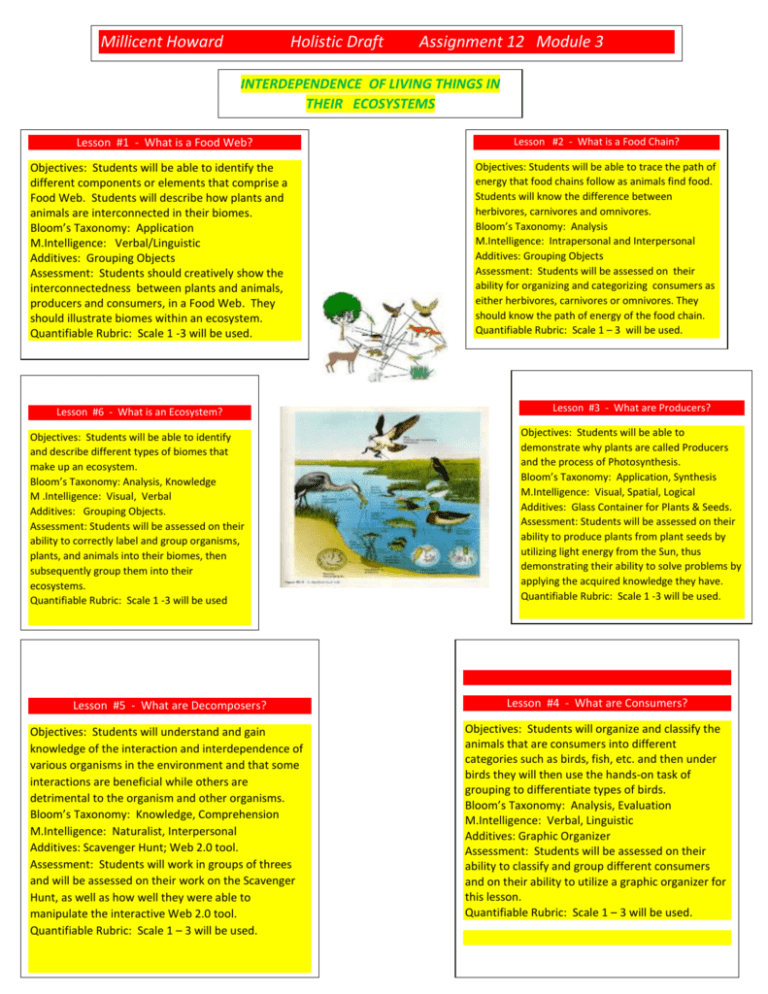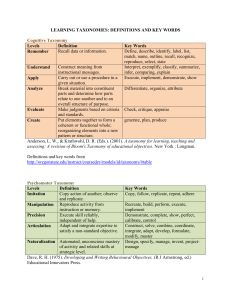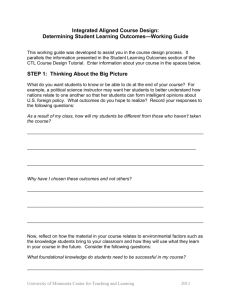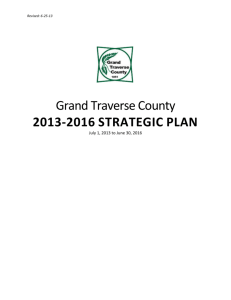Module 3 - Assignment 12
advertisement

Millicent Howard Holistic Draft Assignment 12 Module 3 INTERDEPENDENCE OF LIVING THINGS IN THEIR ECOSYSTEMS Lesson #1 - What is a Food Web? Objectives: Students will be able to identify the different components or elements that comprise a Food Web. Students will describe how plants and animals are interconnected in their biomes. Bloom’s Taxonomy: Application M.Intelligence: Verbal/Linguistic Additives: Grouping Objects Assessment: Students should creatively show the interconnectedness between plants and animals, producers and consumers, in a Food Web. They should illustrate biomes within an ecosystem. Quantifiable Rubric: Scale 1 -3 will be used. Lesson #2 - What is a Food Chain? Objectives: Students will be able to trace the path of energy that food chains follow as animals find food. Students will know the difference between herbivores, carnivores and omnivores. Bloom’s Taxonomy: Analysis M.Intelligence: Intrapersonal and Interpersonal Additives: Grouping Objects Assessment: Students will be assessed on their ability for organizing and categorizing consumers as either herbivores, carnivores or omnivores. They should know the path of energy of the food chain. Quantifiable Rubric: Scale 1 – 3 will be used. Lesson #6 - What is an Ecosystem? Lesson #3 - What are Producers? Objectives: Students will be able to identify and describe different types of biomes that make up an ecosystem. Bloom’s Taxonomy: Analysis, Knowledge M .Intelligence: Visual, Verbal Additives: Grouping Objects. Assessment: Students will be assessed on their ability to correctly label and group organisms, plants, and animals into their biomes, then subsequently group them into their ecosystems. Quantifiable Rubric: Scale 1 -3 will be used Objectives: Students will be able to demonstrate why plants are called Producers and the process of Photosynthesis. Bloom’s Taxonomy: Application, Synthesis M.Intelligence: Visual, Spatial, Logical Additives: Glass Container for Plants & Seeds. Assessment: Students will be assessed on their ability to produce plants from plant seeds by utilizing light energy from the Sun, thus demonstrating their ability to solve problems by applying the acquired knowledge they have. Quantifiable Rubric: Scale 1 -3 will be used. Lesson #5 - What are Decomposers? Lesson #4 - What are Consumers? Objectives: Students will understand and gain knowledge of the interaction and interdependence of various organisms in the environment and that some interactions are beneficial while others are detrimental to the organism and other organisms. Bloom’s Taxonomy: Knowledge, Comprehension M.Intelligence: Naturalist, Interpersonal Additives: Scavenger Hunt; Web 2.0 tool. Assessment: Students will work in groups of threes and will be assessed on their work on the Scavenger Hunt, as well as how well they were able to manipulate the interactive Web 2.0 tool. Quantifiable Rubric: Scale 1 – 3 will be used. Objectives: Students will organize and classify the animals that are consumers into different categories such as birds, fish, etc. and then under birds they will then use the hands-on task of grouping to differentiate types of birds. Bloom’s Taxonomy: Analysis, Evaluation M.Intelligence: Verbal, Linguistic Additives: Graphic Organizer Assessment: Students will be assessed on their ability to classify and group different consumers and on their ability to utilize a graphic organizer for this lesson. Quantifiable Rubric: Scale 1 – 3 will be used.










